de Havilland Aircraft Company - Picture
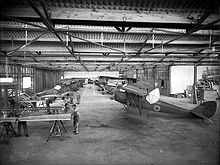
|
|
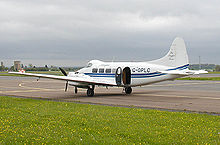
Picture - de Havilland Dove
De Havilland
Fate: Incorporated into Hawker Siddeley
Founded: 1920
Defunct: 1964
Headquarters: Hatfield, Hertfordshire, England
Key people: Geoffrey de Havilland, founder and aircraft designer
Products: Civil and military aircraft, aero-engines, guided weapons
Parent: Hawker Siddeley (from 1959)
Subsidiaries: de Havilland Canada (1928)
de Havilland Australia (1927)
Airspeed Ltd. (1940-1951)
de Havilland Propellers (1935-1961)
de Havilland Engine Company (1944-1961)
The de Havilland Aircraft Company (pronounced /dÉËhx¦vɨlÉnd/) was a British aviation manufacturer founded in 1920 when Airco, of which Geoffrey de Havilland had been chief designer, was sold to BSA by the owner George Holt Thomas. De Havilland then set up a company under his name in September of that year at Stag Lane Aerodrome in Edgware, near London. The company later moved to Hatfield in Hertfordshire. De Havilland Aircraft Company was responsible for producing the first passenger jet and other innovative aircraft.
History
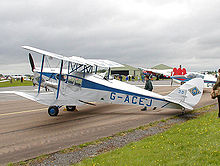
Picture - de Havilland DH 83 Fox Moth
Initially, de Havilland concentrated on single and two-seat biplanes, essentially continuing the DH line of aircraft built by Airco, but powered by de Havilland's own Gipsy engines. These included the Gipsy and Tiger Moths. These aircraft set many aviation records, many piloted by de Havilland himself. Amy Johnson flew solo from England to Australia in a Gipsy Moth in 1930.
The Moth line of aircraft continued with the more refined (and enclosed) Hornet Moth and Moth Minor, the latter being a low-wing monoplane constructed of wood. One of de Havilland's trademarks was that the name of the aircraft type was painted on using a particularly elegant Roman typeface, all in capital letters. When there was a strike at the plant, the artisans who painted the name on the planes used the same typeface to make the workers' protest signs.
The DH 84 Dragon was the first aircraft purchased by Aer Lingus, who later operated the DH 86B Dragon Express and the DH 89 Dragon Rapide. De Havilland continued to produce high-performance aircraft including the high-speed twin-piston-engine DH 88 Comet mail plane, one of which became famous in its red livery as the winner of the MacRobertson Air Race from England to Australia in 1934.

Picture - Interior of De Havilland aircraft factory, Rongotai, Wellington, 1939 or 1940
The high-performance designs and wooden construction methods culminated in perhaps the most famous de Havilland aircraft-the Mosquito, constructed primarily of wood because of the shortage of aluminium during the Second World War. The company followed this with the even higher-performing Hornet, which was one of the pioneers of the use of metal-wood and metal-metal bonding techniques.
After the Second World War, de Havilland continued with leading-edge designs in both the military and civil field, but several public disasters doomed the company as an independent entity. The experimental, tailless, jet-powered de Havilland DH 108 Swallow crashed in the Thames Estuary, killing Geoffrey de Havilland Jr, son of the company's founder. The de Havilland Comet was put into service in 1952 as the eagerly-anticipated first commercial jet airliner, twice as fast as previous alternatives and a source of British national pride. The Comet suffered three tragic and high-profile crashes in two years. Less well remembered, but equally disastrous, was the explosion of the DH 110 prototype during the 1952 Farnborough Airshow, which also killed members of the public.
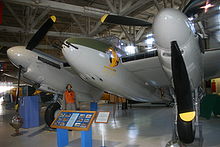
Picture - de Havilland Mosquito B 35 (reconfigured to a FB Mk.VI, on display at the Alberta Aviation Museum)
Hawker Siddeley bought de Havilland in 1960 but kept it as a separate company until 1963. In that year it became the de Havilland Division of Hawker Siddeley Aviation and all types in production or development changed their designations from "DH' to "HS" (see Hawker Siddeley Trident and BAe 125). The famous "DH" and the de Havilland name live on, with several hundred Moths of various types and substantial numbers of many of the company's other designs still flying all over the world.
Following the structural problems of the aircraft in 1954, all remaining Comets were withdrawn from service, with De Havilland launching a major effort to build a new version that would be both larger and stronger. This one, the Comet 4, enabled the De Havilland airliner to return to the skies in 1958. By then, the United States had its Boeing 707 jetliner along with the Douglas DC-8, both of which were faster and more economical to operate. Orders for the Comet dried up.
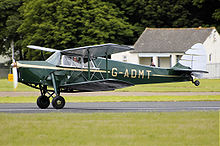
Picture - 1936 de Havilland DH87B Hornet Moth taking off at Kemble Air Day, Wiltshire, in 2008
De Havilland also pushed into the new field of long-range missiles, developing the liquid-fuelled Blue Streak. It did not enter military service but became the first stage of Europa, a launch vehicle for use in space flight. In flight tests, the Blue Streak performed well-but the upper stages, built in France and Germany, repeatedly failed. In 1973, the Europa programme was cancelled, with Blue Streak dying as well. The last of them wound up in the hands of a farmer who used its fuel tanks to house his chickens.
De Havilland returned to the airline world in 1962 with a three-engine jetliner, the Trident. However, he designed it to fit the needs of one airline and one man: MRAF Sholto Douglas later Lord Sholto Douglas, chairman of British European Airways. Other airlines found it unattractive and turned to a rival tri-jet: the Boeing 727. De Havilland built only 117 Tridents, while Boeing went on to sell over 1,800 727s.
Products
Aircraft
![Airplane Picture - De Havilland Sea Vixen (G-CVIX) at an air show in 2005[4]](./images/1-images21010/220px-Dehav.sea.vixen.folded.arp.jpg)
Picture - De Havilland Sea Vixen (G-CVIX) at an air show in 2005[4]
Biplanes
De Havilland Biplane No. 1
De Havilland Biplane No. 2
Airco DH.1
Airco DH.2
Airco DH.3
Airco DH.4
Airco DH 5
Airco DH.6
Airco DH.9
Airco DH.9A
Airco DH.9C
Airco DH.10 Amiens
DH.11 Oxford
DH.12
DH.14 Okapi
DH.15 Gazelle
DH.16
DH.18
DH.27 Derby
DH.29 Doncaster
DH.34
DH.37
DH.42 Dormouse
DH.42A&B Digby
DH.50
DH.51
DH.54 Highclere
DH.56 Hyena
DH.60 Moth
DH 61 Giant Moth
DH.65 Hound
DH.66 Hercules
DH.67
DH.72
DH.77
DH 82 Tiger Moth
DH 83 Fox Moth
DH 84 Dragon/DH 84B Dragon Express
DH 86 Express
DH 87 Hornet Moth
DH 89 Dragon Rapide
DH 90 Dragonfly
DH 92 Dolphin
DH TK.1
Glider
DH.52
Civil and military piston-engined monoplanes
DH 53 Humming Bird
DH.71 Tiger Moth
DH.75 Hawk Moth
DH 80/DH 80A Puss Moth
DH 81 Swallow Moth
DH 85 Leopard Moth
DH 88 Comet
DH 91 Albatross
DH 93 Don
DH 94 Moth Minor
DH 95 Flamingo
DH 98 Mosquito A highly successful wooden plane of WWII
de Havilland Mosquito operational history
List of de Havilland Mosquito operators
List of surviving de Havilland Mosquitos
DH 103 Hornet
DH 104 Dove
DH 114 Heron
DH TK 2
DH TK 4
DH TK 5
Civil and military jet transports
DH 106 Comet
DH 121 Trident later the HS Trident
DH 125 later the HS 125
Military jets
DH 100 Vampire & Sea Vampire (1945)
DH 112 Venom & Sea Venom (1952)
DH 110 Sea Vixen (1959)
Experimental aircraft
DH 108 Swallow (1946)
Rotorcraft - Helicopters
Cierva C.24
Weapon systems
Missiles
Firestreak air-to-air missile
Bluestreak ballistic missile
Spacecraft
Blue Streak Satellite Launch Vehicle
Subsidiaries
de Havilland Canada
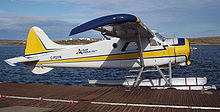
Picture - C-FGYN Adlair Aviation Ltd. de Havilland Beaver (DHC2) Mk I on floats
de Havilland Canada Aircraft of Canada Ltd. was formed in 1928 to build Moth aircraft for the training of Canadian airmen and continued after the war to build its own designs suited to the harsh Canadian operating environment. These are listed below. The DHC-2 through DHC-7 aircraft were all STOL designs. dHC spent a stint as a Canadian Crown Corporation, then as a subsidiary of Boeing, then back as a Crown Corporation. de Havilland (Canada) was eventually incorporated into the Bombardier group of companies and the Dash Eight remains in production with a particular emphasis being placed on its quiet operation in comparison to other aircraft of a similar size. In May 2005, Bombardier sold the rights to the out-of-production aircraft (DHC-1 through DHC-7) to Viking Air Ltd. of Sidney, British Columbia.
de Havilland Australia
The first foreign subsidiary was set up in Australia in March 1927 as de Havilland Aircraft Pty. Ltd. The company moved from Melbourne to Sydney during 1930 where it acted as an agency for the parent company, with assembly, repair and spares facilities for the company's popular sporting and airliner types. Aircraft design and full manufacture by de Havilland Australia (DHA) did not take place until the Second World War, when the company began production of the DH 82 Tiger Moth primary trainer at Bankstown, NSW.
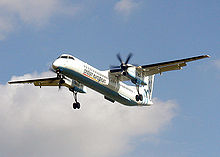
Picture - Bombardier (de Havilland Canada) Dash 8 of Flybe
During the Second World War, DHA designed a small troop-carrying glider to be used if Australia was invaded by Japan. The DH-G1 emerged in mid-1942 and utilised the DH 84 Dragon forward fuselage, 87 of which were in production at the same factory as navigational trainers. The two built served as prototypes for the definitive DH-G2 produced the following year but the need had passed by this time and only six DH-G2s were built. The company also began to manufacture the Mosquito, with deliveries to the RAAF being first made in 1944. A total of 212 Mosquitos were built at Bankstown between 1943 and 1948. Some of these aircraft continued in RAAF service until 1953.
Licenced production of the de Havilland Vampire began in 1948, with the first of 190 built flying in 1949.
Another DHA design, the de Havilland Australia DHA-3 Drover, was manufactured between 1948 and 1953. Only 20 were produced, mostly for the Royal Flying Doctor Service (RFDS), Trans Australia Airlines and Qantas. The DHA-3 Drover was a 3-engined light transport derived from the DH 104 Dove, capable of carrying six-eight passengers. It was designed as a replacement for the DH 84 Dragon, which was common in Australia due to its wartime production by DHA. The engine chosen for the new design was the de Havilland Gipsy Major Mk-10 4s. Several Drovers were later re-engined with more powerful Lycoming O-360 horizontally-opposed engines to improve performance.
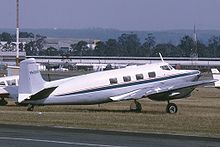
Picture - De Havilland Australia DHA.3 Drover 3B at Sydney (Bankstown) in 1970, where it was originally built
The de Havilland Australia concern is now owned by Boeing Australia and is known as Hawker de Havilland Aerospace. On Feb. 6, 2009, Boeing announced that Hawker de Havilland changes its name to Boeing Aerostructures Australia.
DH-G1
DH-G2
DHA-3 Drover
de Havilland engines
As well as a prolific aircraft builder, de Havilland was also a significant producer of aero engines. This went against usual practice- usually engines are designed and produced by a dedicated company though in the UK the Bristol Aeroplane Company had a substantial engine business and Armstrong Whitworth Aircraft was part of the same business as Armstrong Siddeley The successful "Gipsy" and the later developments such as the Gipsy Major were successful and popular power units, being used in nearly all of de Havilland's light designs and several aircraft from other manufacturers. Gipsy engines were relatively unusual by the 1930s/40s because they were in-line engines, at a time when radial or opposed-action engine layouts were more popular. The de Havilland company was also a competitor to Rolls-Royce and Metrovick in the early years of the jet engine development. Employing the services of Frank Halford then buying out his company they produced the de Havilland Goblin and de Havilland Ghost engines for first their jet fighters then the Comet.
Aerospace industry in the United Kingdom
Bibliography
Bain, Gordon. De Havilland: A Pictorial Tribute. London: AirLife, 1992. ISBN 1-85648-243-X.
Bransom, Alan. The Tiger Moth Story, Fifth Edition. Manchester, UK: Crécy Publishing Ltd., 2005. ISBN 0-859791-03-3.
Hotson, Fred. The De Havilland Canada Story. Toronto: CANAV Books, 1983. ISBN 0-9690703-2-2.
Jackson, A J. De Havilland Aircraft since 1909. Putnam, 1987. ISBN 0-85177-802-X
De Havilland Pictures and De Havilland for Sale.
Living Warbirds: The best warbirds DVD series.
Source: WikiPedia